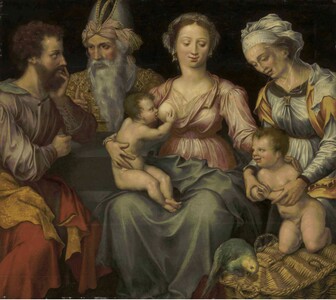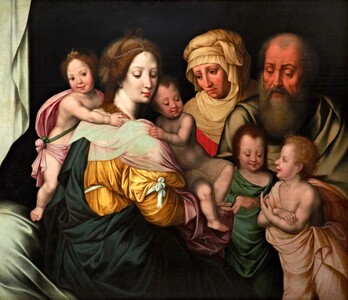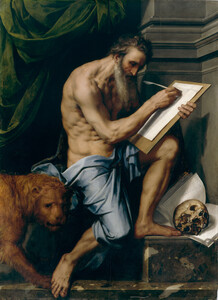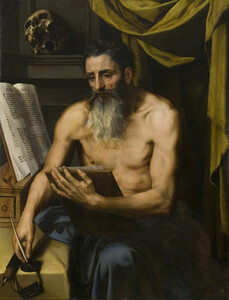15.000 €
Saint Jerome
Oil on panel : 82,6 X 63,4 cm
Unsigned
Frame : 93,3 X 77,1 cm
The attribution has been confirmed to the previous owner in a certificate by Prof.-Dr. Jan De Maere, 25/05/22
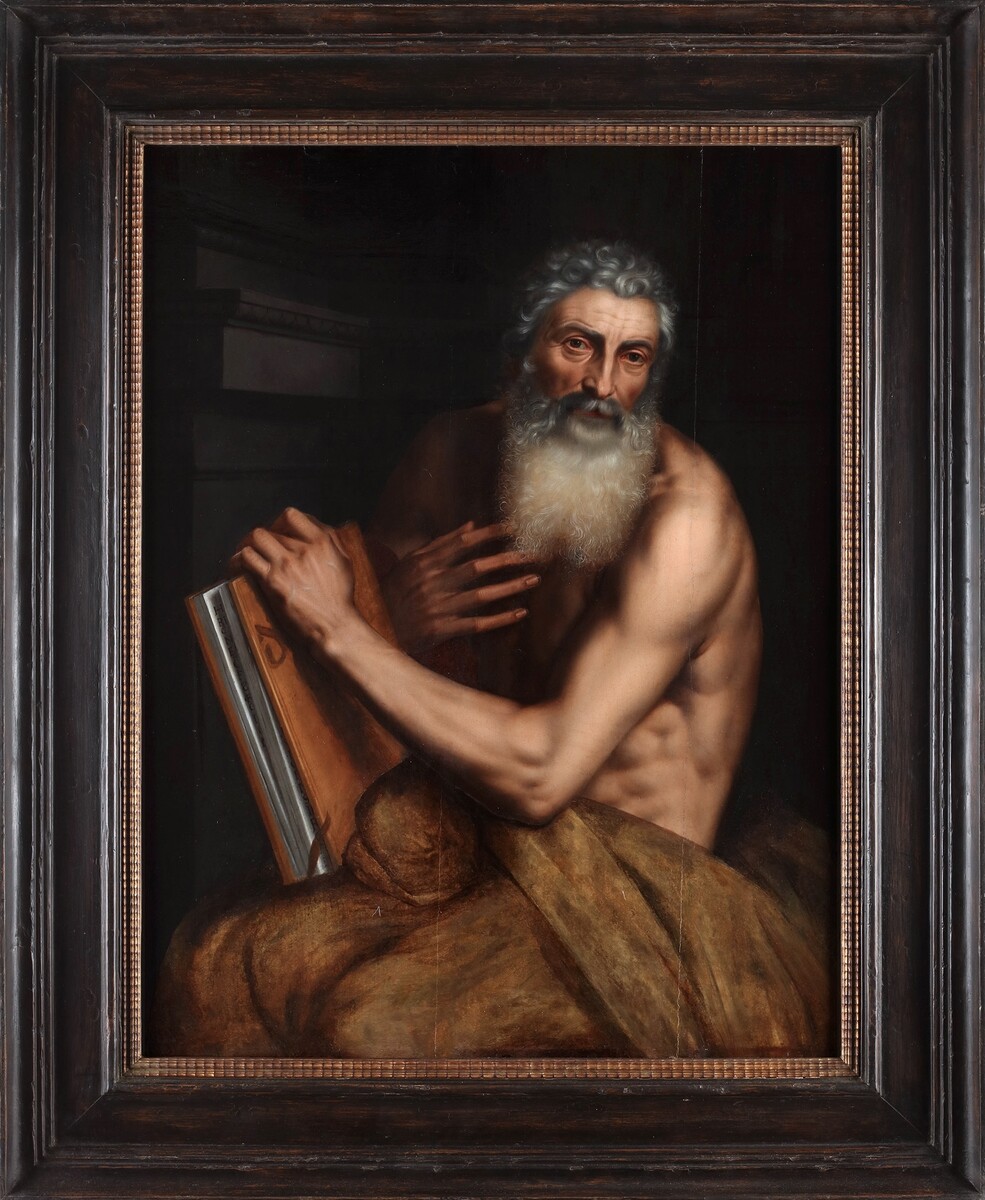
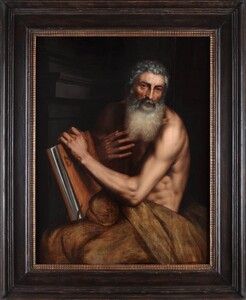

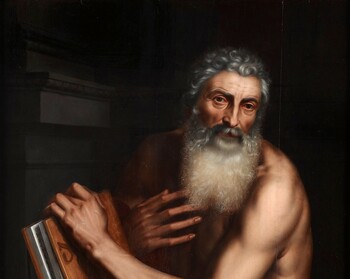
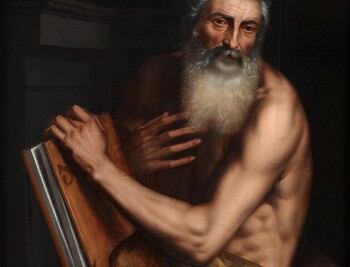
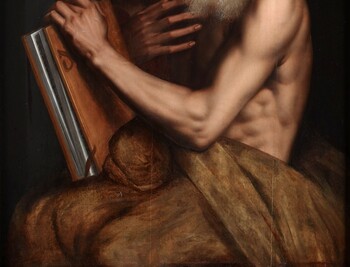
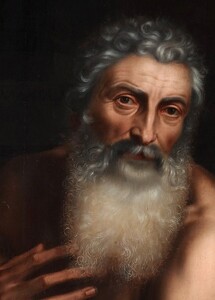
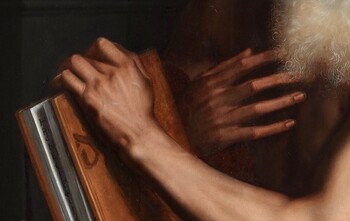
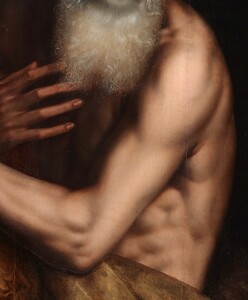
In short
Vincent Sellaer was one of the main Flemish Renaissance painters, whose style is a perfect mix of Flemish meticulosity and harmonious Italian High Renaissance elements.
Saint Jerome was one of the four Church Fathers. He translated the Bible, which he is holding here, into Latin.
About Vincent Sellaer
Flemish painter
Malines circa 1500 – before 1589 place unknown.
History painter (painter of religious and mythological subjects).
Vincent Sellaer and Michiel Coxie were the principal history painters active in Mechelen (Malines) around the middle of the 16th century. The town had become an important cultural centre under the reign of Margaret of Austria ; she was the Governor of the Habsburg Netherlands from 1507 to 1515 and from 1519 to 1530.
Sellaer’s style is a combination of Northern and Italian sources, which one also detects in the works of Joos van Cleve (circa 1480/90 – 1540/41). Sellaer probably travelled to Italy, where he possibly collaborated with Moretto da Brescia (circa 1492 – 1554), who exposed him to the influence of Leonardo da Vinci (1452 – 1519).
Giampietrino (active 1495 – 1549), who was a pupil of Leonardo, also had an impact on Sellaer’s style. This can be seen in our painting in the monumentality of our saint’s muscular body and the comparable rendering of thick, heavy drapery. The limited use of warm colours, the manipulation of light and darkness, the few elements of Classical arcitecture, the dynamic sense of movement and the pyramidal composition all refer to Italian High Renaissance influence.
About Saint Jerome
Stridon (near present-day Ljubljana) circa 347 – 420 near Bethlehem
Catholic saint, doctor of the church and one of the four Latin church fathers, with Saint Augustine, Saint Ambrose and Pope Gregory I.
Author of the definitive and officially promulgated Latin version of the Bible of the Roman Catholic Church, the so-called Vulgate, which he translated from the Hebrew and from the Greek. Saint Jerome is one of the most voluminous writes of ancient Latin Christianity, second only to Saint Augustine.
Representations of Saint Jerome were extremely popular in Flemish painting during the 16th century: it is thought that some 30% of all paintings of saints of that period depict Saint Jerome.
The two main, but opposite, iconographic sources for these 16th century painters were the Golden Legend and Erasmus.
The ‘Legenda aurea’ or Golden Legend was a medieval collection of legendary lives and accounts of miracles of important Christian saints compiled around 1260 by Jacobus de Voragine, the archbishop of Genoa.
Painters inspired by the Golden Legend would represent Saint Jerome as a lonely anchorite in the wilderness during his most intense period of asceticism when, between 375 and 378, he had retired in the Syrian dessert. He is a Roman saint, a praying hermit renouncing temptation in front of a crucifix, often doing penance with a stone. The skull in front of him is a Vanitas symbol, referring to the vanity of earthly life.
Usually the half naked St Jerome is accompanied by a lion. According to the Golden legend one evening as Saint Jerome sat within the gates of his monastery at Bethlehem, a lion entered limping. All the monks ran away, but Saint Jerome went forward to meet him, as if he were a guest. The lion lifted its paw, and Saint Jerome examining it found that the poor animal was wounded by a thorn, which he extracted; he cared for the foot until it was healed. The grateful lion remained with his benefactor ever after.
Every day the lion would accompany a donkey to fetch wood in the forest. One day the lion fell asleep and the donkey was taken by passing merchants, who used it to lead their caravan of camels. Finally the lion was able to find back the donkey and he forced the camel drivers to the monastery where they asked for forgiveness to St Jerome.
The second source of inspiration to represent St Jerome was the Humanist Erasmus (Rotterdam 1466 – 1536 Basel). He had sought to demystify saints, especially Saint Jerome: he wrote a new biography of our saint (based on Jerome’s own letters and publications) and he also wrote two new critical publications of the New Testament: the ‘original’ Greek version and his translation into Latin, for he thought Saint Jerome had not completely correctly translated it. Because St Jerome had translated the bible and thus because of his knowledge of several languages, his erudition and his intelligence St Jerome became the model for 16th century Renaissance Humanists. Towards the middle of the 16th century artists inspired by Erasmus no longer represent St Jerome as a Roman saint, but as a real man, as a Renaissance Humanist scholar in his study, amidst a multitude of objects.
Why should you buy this painting?
Because it is an excellent example of Italian-influenced, Flemish Renaissance painting.
Comparative paintings
Click photos for more details

